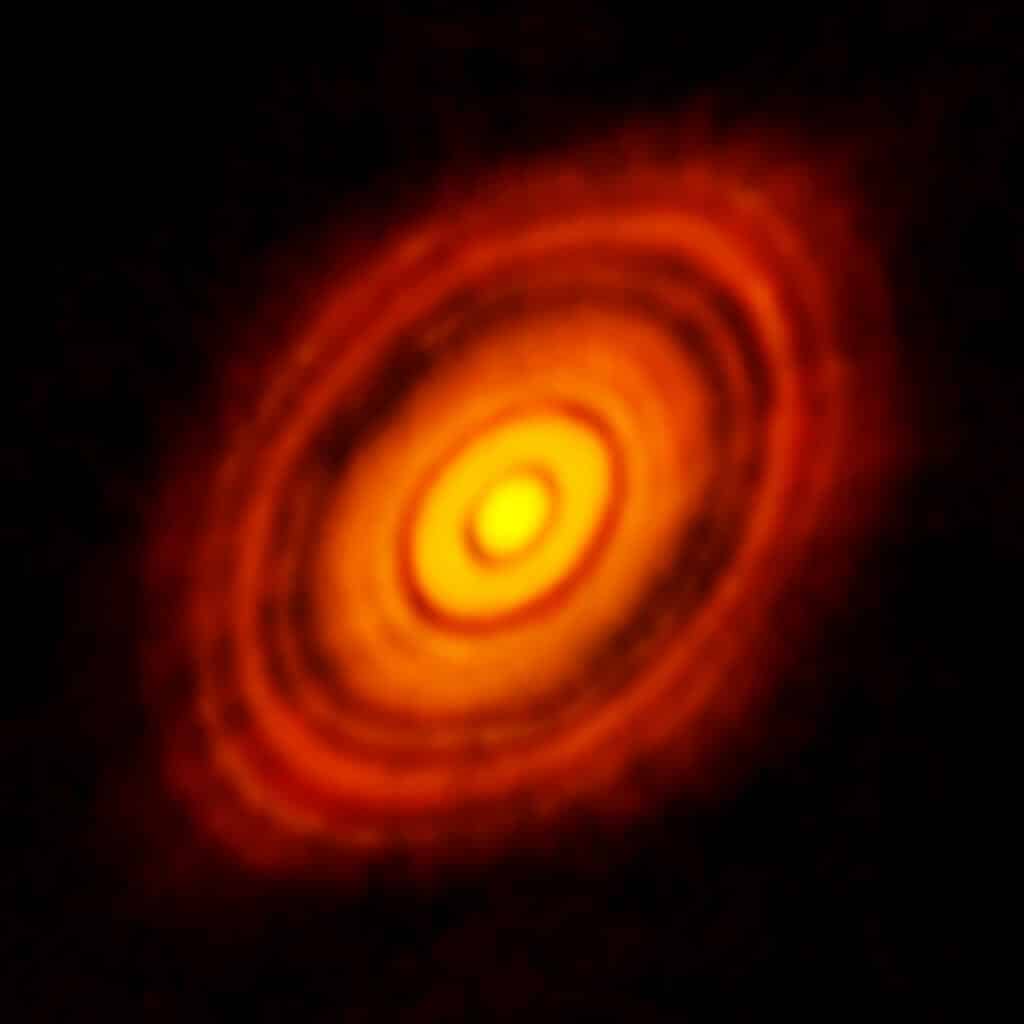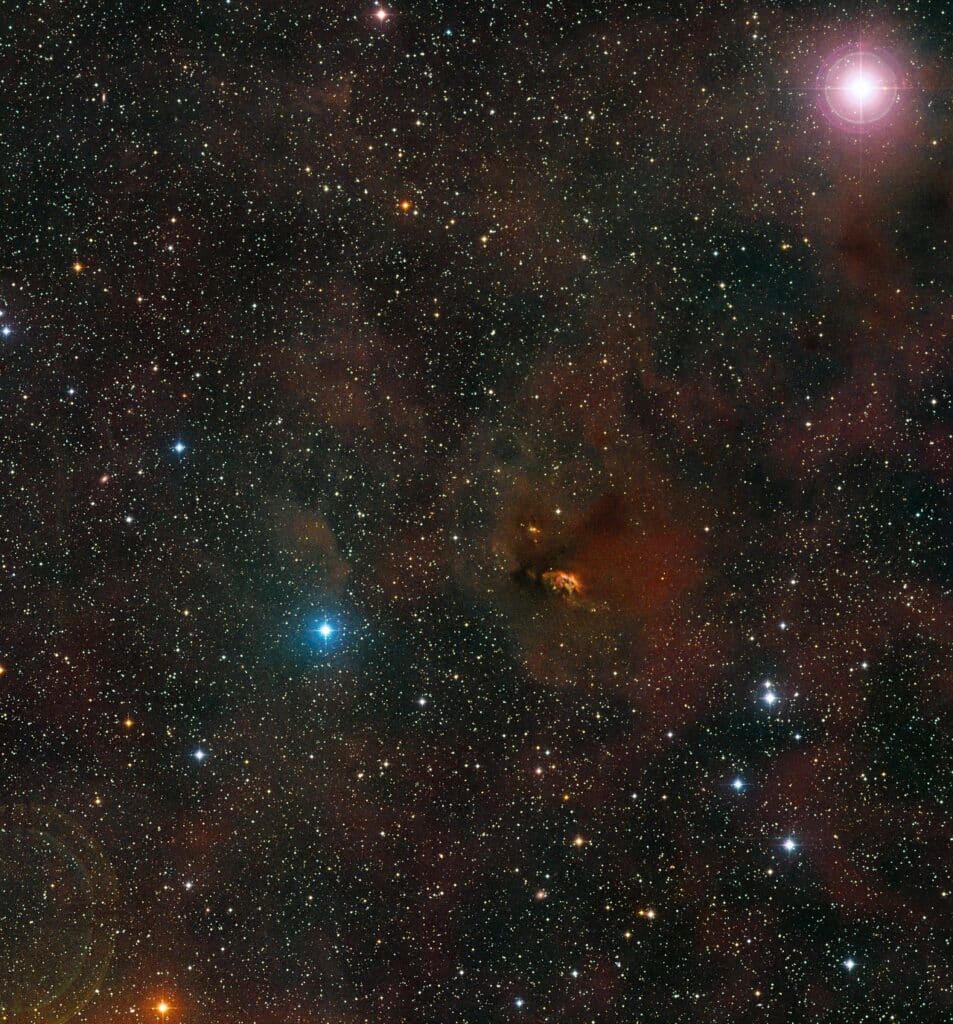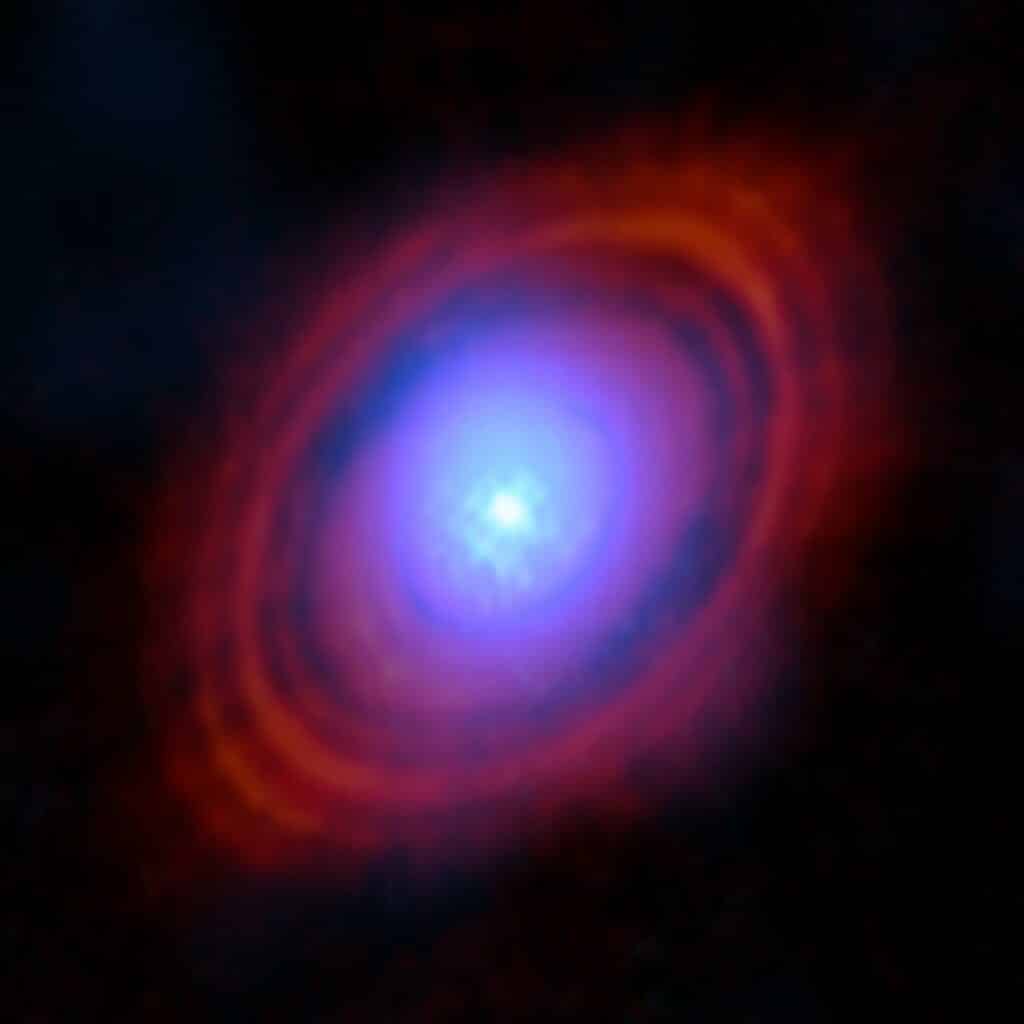For the first time ever, astronomers have been able to map the distribution of water vapor in the disc surrounding a young star, a region where planets are believed to be forming. This discovery, made using the Atacama Large Millimeter/submillimeter Array (ALMA), in which the European Southern Observatory (ESO) is a partner, could provide significant insights into the role of water in planet formation and the origins of life as we know it.
The young star in question, HL Tauri, is located 450 light-years away in the constellation Taurus and is similar to our own Sun. The findings revealed an astonishing quantity of water vapor, at least three times as much as all of Earth’s oceans combined, in the star’s inner disc.

“I had never imagined that we could capture an image of oceans of water vapor in the same region where a planet is likely forming,” says study lead author Stefano Facchini, an astronomer at the University of Milan, in a media release.
The observations conducted with ALMA mark the first time scientists have been able to see how water is distributed in a stable, cool disc — the environment most conducive to planet formation. This achievement is particularly significant given the challenges of observing water with ground-based telescopes due to the interference caused by Earth’s own atmospheric water vapor. ALMA’s location in the Chilean Atacama Desert at an elevation of about 5,000 meters, chosen for its dry conditions, minimizes this degradation and provides exceptional observing conditions.
“It is truly remarkable that we can not only detect but also capture detailed images and spatially resolve water vapor at a distance of 450 light-years from us ,” notes study co-author Leonardo Testi, an astronomer at the University of Bologna.
The discovery was made in a region of the HL Tauri disc known to have a gap, which is thought to be carved out by orbiting young planet-like bodies as they accumulate material and grow. This finding suggests that the water vapor could play a crucial role in the chemical composition of planets forming within these gaps.
The presence of water in planet-forming discs is significant because it is a key ingredient for life on Earth and is thought to enhance the process of planet formation. When it is cold enough for water to freeze onto dust particles in the disc, these icy grains can stick together more efficiently, creating ideal conditions for planet formation.
“It is truly exciting to directly witness, in a picture, water molecules being released from icy dust particles,” says study co-author Elizabeth Humphreys, an astronomer at ESO.

The study’s findings not only shed light on the process of planet formation but also hint at the potential for water to influence the development of planetary systems in a manner similar to its role in our own Solar System 4.5 billion years ago. With upcoming upgrades to ALMA and the anticipated launch of ESO’s Extremely Large Telescope (ELT), astronomers are poised to gain even deeper insights into planet formation and the pivotal role of water in this process. The ELT’s Mid-infrared ELT Imager and Spectrograph (METIS) will offer unparalleled views of the inner regions of planet-forming discs, where Earth-like planets emerge.
The study is published in the journal Nature Astronomy.












